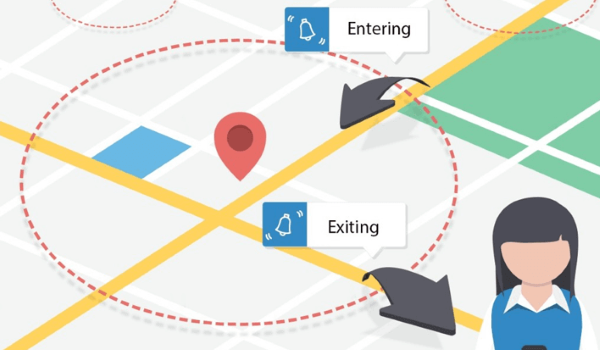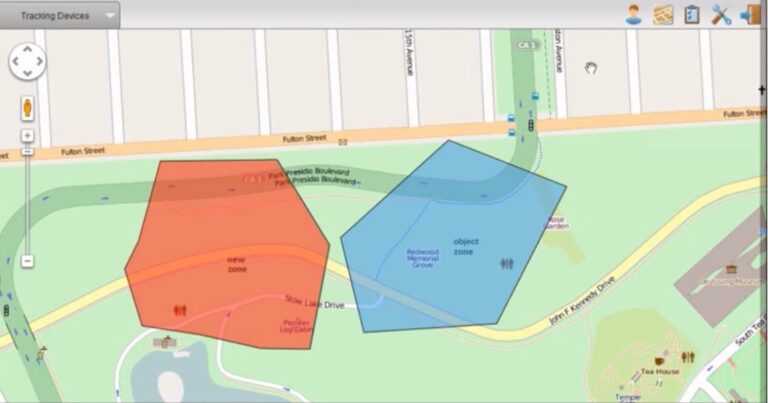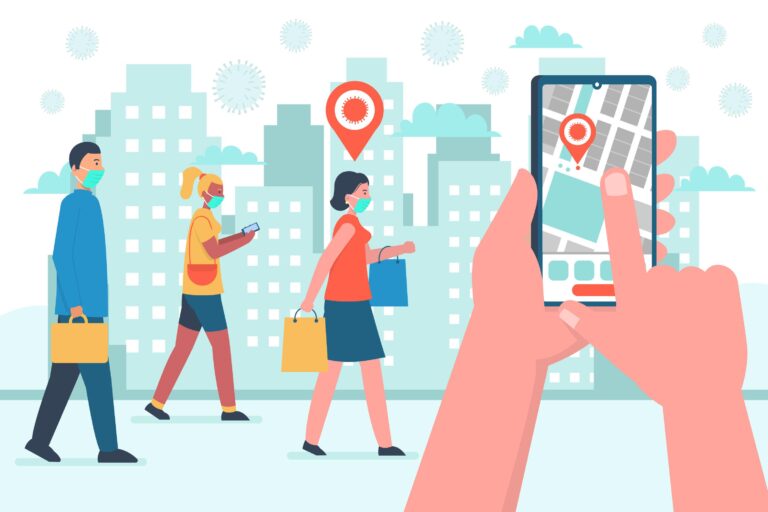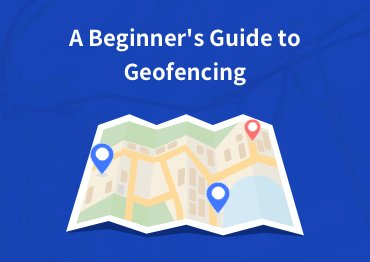What is a Geofence? and How Does It Benefit Businesses?
Geofencing is a highly transformative technology that can help business owners track their assets and manage logistics more effectively. This technology uses tracking capabilities in devices to provide real-time alerts to business owners whenever an asset enters or exits designated areas.
In this article, we will explore the fundamentals of geofencing, covering its definition, as well as the risks and benefits associated with this technology.
Part 1 : What is a Geofence?
A geofence is defined as a virtual boundary created to encompass a specific area or zone.
Think of it as drawing a digital perimeter around a designated map area. Businesses and organizations utilize geofences to monitor activities within that defined region.
Geofencing employs technologies such as GPS, WiFi, cellular data, and radio frequency identification (RFID) to notify businesses whenever a device enters or leaves its predefined geofence.
Part 2 : How Does Geofencing Work?
Geofencing technology involves the establishment of a virtual area for activity tracking. This virtual boundary can be created using two methods.
One approach is to draw a basic circular boundary around the desired target area.

Alternatively, you can utilize GPS or RFID-enabled software to define specific points on the map, which, when connected, form the border of the zone.
The latter method employs polygonal geofencing. Instead of drawing a circular boundary around a specific area, polygonal geofencing allows you to create custom-shaped boundaries using a series of connected points on a map, forming a polygon.

Once the boundary is defined, the next step is to establish trigger actions and alerts.
Whenever a device meeting your criteria enters or exits the geofence, you'll receive a trigger response notification. This functionality works on any device with location services enabled.
Part 3 : What are some applications of geofencing?
1Location-based advertising
Location-based advertising, also known as geotargeting or location-based marketing, is a digital advertising strategy that delivers targeted ads to users based on their current or past physical location.
This type of advertising leverages the location data obtained from users' devices, such as smartphones or tablets, to serve relevant and contextually appropriate ads.
By doing so, it strategically serves ads that align with users' context and preferences. The primary goal of location-based advertising is to engage with consumers at moments when they are near a particular physical location or located within a predefined geographical area.

2Human resources
One of the most remarkable use cases for geofencing is found in Human Resources (HR) departments. Geofencing technologies proves invaluable in both the recruitment process and the management of existing staff.
Implementing a geofence around the workplace allows HR to efficiently monitor employee attendance. Additionally, alerts can be set up to notify when employees enter or exit the office premises.
This modern method serves as a more convenient and accurate alternative to traditional clocking in systems. Furthermore, it extends to tracking remote employees, enhancing the overall management process.
Geofencing's utility extends to the hiring process as well. By targeting specific locations such as job fairs, universities, or business districts, HR can use push notifications or alerts sent to devices within these predetermined zones.

3Fleet management
Logistics and fleet management are primary domains where geofences find extensive use.
Geofences enable precise tracking of both vehicles and shipments. Companies engaged in fleet management can establish targets and geofences to ensure optimal vehicle utilization, minimizing instances of idleness.
By employing location tracking devices, they gain real-time insights into the exact whereabouts and routes of each vehicle.
Comprehensive logs and reports generated by this technology offer valuable insights for enhancing routing and overall device management.
![]()
4Asset management
The term "assets" within a company encompasses various items, including equipment, devices, and properties. As these assets often represent significant investments or are essential for the company's operations, knowing their whereabouts becomes crucial.
This is where geofencing technology comes into play, allowing for continuous location tracking of these assets.
A network administrator can strategically establish a geofence, which then triggers alerts whenever assets move beyond the company's designated area. This functionality proves highly valuable, especially for equipment that is frequently required outside the premises.
Asset management is particularly indispensable in industries such as oil, gas, mining, construction, and heavy equipment. By implementing geofencing, companies in these sectors can ensure better oversight and security for their valuable assets.

5Patient management
Many hospitals and care facilities use devices like wearables for older patients or those with dementia.
Geofencing devices can be a real lifesaver in these cases. They help caregivers to maintain real-time awareness of their patients' whereabouts. The devices can also send alerts if patients go outside a certain area or need specific treatments.
![]()
Part 4 : Several Privacy Concerns with Geofencing
While businesses can gain from geofencing, there are worries about ethics and privacy. The primary concern is often about collecting data, and laws can vary based on your location.
However, geofencing usually aims to target specific people with business-related information. In most cases, using a geofence with notifications or alerts won't violate the law.
From a legal perspective, only get the necessary information, which is generally allowed. The specific rules depend on your country's trade commission. Consulting a lawyer can help you understand what's allowed.
If you have ethical concerns about implementing a geofence, the best course of action is to proactively inform your customers or employees. By transparently communicating the existence of the geofence in their vicinity, you can request their consent before contacting them or collecting any information. This open and respectful approach can help alleviate your ethical apprehensions.
Part 5 : Best Practices for Implementing Geofencing
To take full advantage of geofencing technology, you should try the following tips and techniques to help your business grow.
Optimize Geofence Radius:
Determine the optimal geofence radius based on your specific location. For outdoor settings, it's advisable to set a minimum radius of 100 meters. This ensures that all devices connected to your business trigger the alert.
Setting the radius too low or too high may lead to inaccurate results, so finding the right balance is crucial.
Respect User Consent:
Before establishing a geofence that could potentially affect user privacy, obtain their clear consent. Make sure to be transparent and respectful toward user and staff privacy. Clearly explain how their data will be used to build trust with both customers and staff.
Optimize Power Consumption:
To manage power usage effectively, you can adjust the geofence alert latency or expand the radius.
Reducing alert latency means that notification alerts won't be sent automatically. Even a slight latency, such as a 5-second delay, can significantly improve battery performance by preventing continuous alert transmissions.
Expanding the radius can also be beneficial if you know that the tracked users consistently remain within a specific area for an extended period. This approach helps reduce the frequency of system triggers caused by entries and exits.
Adopting Mobile Device Management (MDM):
Adopting Mobile Device Management (MDM) can be considered one of the best practices when implementing geofencing, especially in enterprise or business contexts.
Take AirDroid Business MDM Geofencing for example, it offers several benefits that enhance the effectiveness, security, and management of geofencing solutions:
- ● Streamlined Device Management
- ● Consistent Configuration
- ● Remote Monitoring and Troubleshooting
- ● Compliance and Reporting
- ● Data Security

A Beginner's Guide to Geofencing
If you want deeper insights into how geofencing can help you manage your devices and boost your workforce productivity, you’ll want to grab our Geofencing guide. It’s loaded with detailed information to help you make the best decision for your organization's needs.
Part 6 : Closing Thoughts
Geofencing is a powerful tool that, more importantly, can greatly enhance your business. The key is to establish the right virtual boundary, as this opens up numerous possibilities. It's essential to address privacy concerns and ensure that your geofence respects user privacy and legal rights.
Moreover, various industries can benefit from geofencing technology. Whether you're using it to collect or share information, a strategically placed geofence can significantly improve your business operations. It can assist in tasks such as optimizing deliveries, keeping track of assets, and even finding suitable employees.





Leave a Reply.